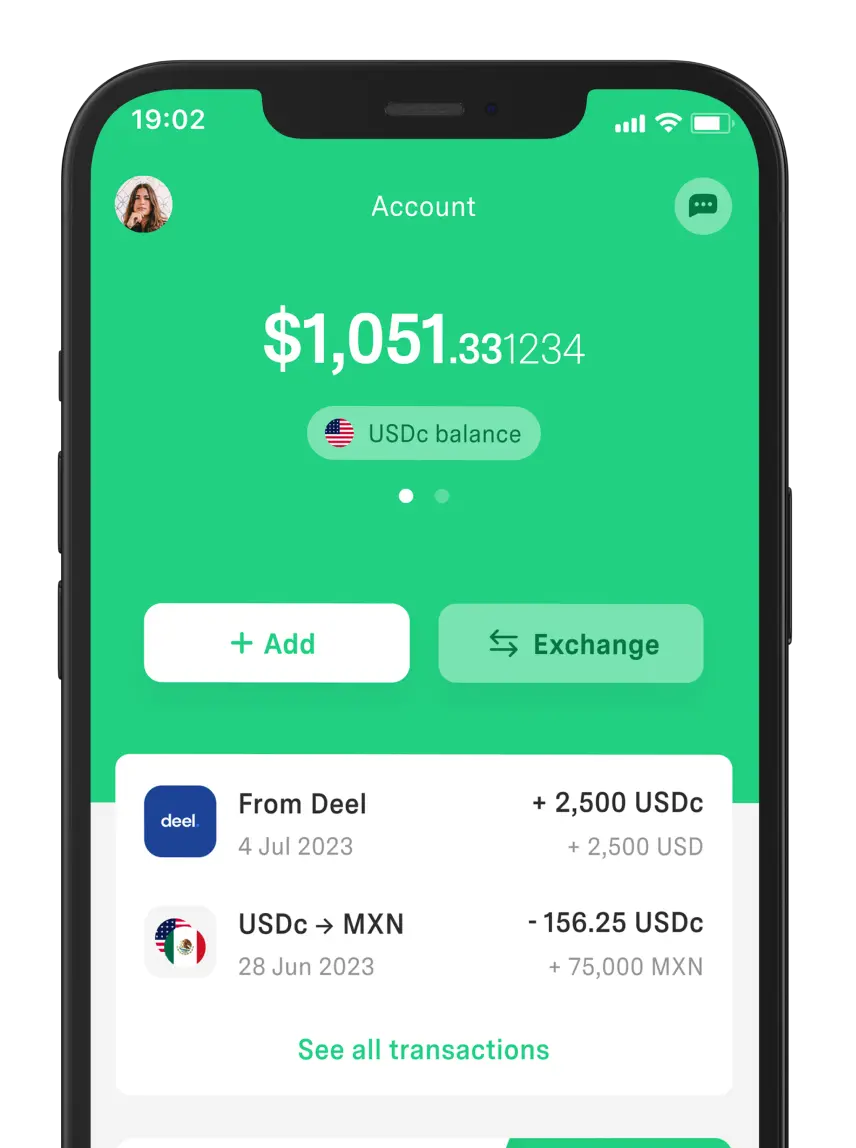 Freelancer tips
Freelancer tips Impostos do Fiverr no Brasil: Como ser tributado como freelancer?
Se eu sou freelancer, preciso pagar impostos? Sim, você deve, caso resida no Brasil e obtenha renda por meio do Fiverr ou de outras plataformas.



A percentage is represented by the symbol % and helps us compare or measure proportions. While it’s often associated with the business or finance world, it’s also a vital tool in our everyday lives.
That’s why learning how to calculate percentages is essential. Today, we bring you formulas, practical examples, and quick tips so you can do it easily, accurately, and quickly—even without a calculator.
A percentage is a mathematical expression that uses the number 100 as a base to determine how much a part represents in relation to the total.
For example, a Statista study conducted between 2023–2024 shows that 40% of Mexicans are concerned about their financial future. This means that for every 100 people, about 40 feel uncertain about their economic stability in the coming years.
As you can see, the percentage figure is accompanied by the % symbol, which means “per every 100.” In mathematical terms, this is equivalent to dividing the given amount by 100.
To calculate percentages, there are 3 key elements:
1. Total Amount (base): This is the reference value that represents 100%.
Example: If you have a business with 200 employees, these 200 are equivalent to 100%.
2. Part (fraction): This is the specific amount of that total you want to measure.
Example: If out of those 200 employees, 50 are women, that is the part to be analyzed.
3. Percentage: This is the result that tells you how large that part is in relation to the total, using 100 as the base.
The basic formula for calculating the percentage would be:

This structure may vary depending on what you want to calculate.
Applying this to the previous example, the calculation would be as follows:
Total (100%) = 200 employees.
Part to be analyzed = 50 women.
Percentage = (50 ÷ 200) × 100 = 25%.
So, for every 100 workers, 25 are women.
However, there are variations of the basic formula depending on which data point is missing:
To calculate the percentage that a quantity represents over another, the previously mentioned formula is applied: Percentage = Part ÷ Total × 100.
If you want to find the value (part) and you know the percentage and the total, use: Part = Percentage × Total ÷ 100.
To estimate the total from a percentage and a partial value, use: Total = Part × 100 ÷ Percentage.
That’s why the basic formula is often used to calculate vacation pay, project progress, or a sales commission.
There are multiple ways to calculate percentages. And although some operations require calculators, others can be done through mental shortcuts using simple numerical patterns.
Likewise, you can opt for alternative methods that allow you to obtain the result quickly and accurately.
Here’s how:
This is one of the most common tricks, where you move the decimal point one place to the left to get 10% of a number. From there, you can multiply or divide to find other percentages.
Let’s say you want to know what 30% of 240 is:
1. Calculate 10% by moving the decimal one place to the left: 10% of 240 = 24 (24.0).
2. Since 30% is three times 10%, multiply: 24 × 3 = 72.
Therefore, 30% of 240 is 72.
Other examples:
5% of 240 = 12 (half of 10%).
15% of 240 = 36 (10% + 5%).
20% of 240 = 48 (double the 10%).
25% of 240 = 60 (20% + 5%).
This trick starts with finding 1% of the total (1/100) and multiplying it by the desired percentage. It’s similar to the previous method, except 1% is found by moving the decimal two places to the left:
For example, if you want to calculate 6% of 240:
1. Move the decimal two places to the left: 1% of 240 = 2.4 (2.40).
2. Since 6% is six times 1%, multiply: 2.4 × 6 = 14.4.
Therefore, 6% of 240 is 14.4.
This is a quick method, as you only work with halves, without complex multiplications or divisions:
50% of 240 = half (120).
25% of 240 = half of the half (60).
75% of 240 = half plus a quarter (120 + 60 = 180).
Equivalent fractions used in percentages based on 100 are:
50% = 50/100 = equivalent to 1/2 (divide by 2).
25% = 25/100 = equivalent to 1/4 (divide by 4).
75% = 75/100 = equivalent to 3/4 (divide by 4 and then multiply by 3, or vice versa—multiply by 3 and then divide by 4, it gives the same result).
This method sets up the proportion of three known values to find the fourth.
Example: If 150 is 100%, what is 20%?
100% is the base amount, in this case, 150.
20% is the unknown value (X).
The formula for the rule of three is:

Multiply crosswise and divide: (150 × 20) ÷ 100.
Therefore, 20% of 150 is 30.
This method is often used to directly calculate discounts or increases. Essentially, you first determine the percentage, then subtract or add.
Let’s say an item costs 700 MXN and has a 20% discount.
Instead of calculating 20% off 700, you should:
1. Subtract the discount percentage from 100%: 100% - 20% = 80%.
2. Convert to decimal: 80 ÷ 100 = 0.8.
3. Multiply by the original price: 700 × 0.8 = 560.
As a result, you get the final discounted price: 560 MXN.
This involves converting the percentage you want into its decimal form. Once you have it, multiply by the total.
For example, if you need to calculate 15% of 80:
1. Convert the percentage to decimal: 15 ÷ 100 = 0.15.
2. Multiply that result by the total: 0.15 × 80 = 12.
Therefore, 15% of 80 is 12.
These are just some mental tricks and methods for calculating percentages. You can also use certain types of charts to better understand and estimate them without doing exact calculations. 10 × 10 grids, bar charts, or pie charts are very common options.
Let’s say you made an investment of 5,000 MXN, and it grows at an annual rate of 10% for 3 years.
Method: Decimal calculation applied successively:
Year | Calculation | Total |
1 | 10 ÷ 100 = 0.10. 0.10 × 5,000 = 500. | 5,000 + 500 = 5,500 MXN. |
2 | 0.10 × 5,500 = 550. | 5,500 + 550 = 6,050 MXN. |
3 | 0.10 × 6,050 = 605. | 6,050 + 605 = 6,655 MXN. |
This means that in 3 years, the growth of your investment has generated a return of 1,655 MXN.
Percentages appear in our daily lives in different forms and situations:
Shopping. When you see a discount and want to know how much you will save.
Savings. They help you determine what percentage of income you can allocate to savings or investments.
Expenses. Used when calculating what you need to pay for utilities like electricity, water, food, and other expenses.
Education. Help interpret exam results.
Surveys. Essential for analyzing, summarizing, and presenting statistical data, making interpretation easier.
Tips. Used to calculate how much to leave as a tip in restaurants.
They are also essential for:
Calculating vacation pay, determining the amount to receive for vacation days.
Analyzing price increases in products and services.
Determining the daily, monthly, or annual interest rate of a loan or investment.
Estimating business profit margins or evaluating sales performance.
Percentage calculations are everywhere—from simple matters like shopping and selling to interpreting data in academic or professional settings.
Situation | Formula | Application |
Estimate interest earned on an investment | Part = Total × percentage in decimal. (Decimal Calculation) | Interest = Capital × (rate ÷ 100) |
Calculate the final price with a discount | Part = Total × (100 − discount percentage) ÷ 100. (Inverse Percentages) | Final price = Total × (100 − discount) ÷ 100 |
Know the amount of vacation pay | Part = Percentage × total ÷ 100. (Basic Formula) | Vacation pay = Vacation percentage × daily salary ÷ 100 |
Leave a tip in a restaurant | Part = Total × percentage in decimal. (Decimal Calculation) | Tip = Total × (percentage ÷ 100) |
In short, mastering percentage calculations is essential for solving simple operations and analyzing more complex situations. Moreover, there are different tricks and methods you can apply depending on the case.
The key is to choose the correct formula to interpret and handle information accurately. So, if your math skills need improvement, start practicing with simple problems and gradually move forward.
Lastly, we recommend using DolarApp for your digital dollar or euro transactions. In addition to working with USDc and EURc through a digital account, we offer a fair exchange rate to convert your funds between currencies.
Download it and take advantage of it to receive or send digital dollars to the U.S. or Europe!

Os países têm fronteiras. Suas finanças, não mais.
 Freelancer tips
Freelancer tips Se eu sou freelancer, preciso pagar impostos? Sim, você deve, caso resida no Brasil e obtenha renda por meio do Fiverr ou de outras plataformas.

 Freelancer tips
Freelancer tips A contract clause isn’t the same in every case. Discover what it is, common types, and some examples to understand its importance.

 Freelancer tips
Freelancer tips Team drowning in chaos? Discover the tool that clarifies roles, avoids mistakes, and boosts project flow.


